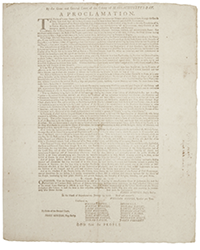"Their cottages are built in the same manner as those of Lithuania, but larger, and somewhat better provided with furniture and domestic utensils. They are of a square shape, formed of whole trees, piled upon one another, and secured at the four corners, where their extremities meet, with mortices and tenons. The interstices between these piles are filled with moss. Within, the timbers are smoothed with the axe, so as to form the appearance of a wainscot; but without, are left with the bark in their rude state. The roofs are in the penthouse form, and generally composed of the bark of trees or shingles, which are sometimes covered with mould or turf. The peasants usually construct the whole house solely with the assistance of the hatchet, and cut the planks of the floor with the same instrument, being in many parts unacquainted with the use of the saw. They finish the shell of the house before they begin to cut the windows and doors. The windows are openings of a few inches square; and the doors are so low as not to admit a middle-sized man without stooping. Most of these huts are only of one story; a few of them contain two rooms, the generality only one."* (Coxe's Travels in Russia, vol. i., p. 335, 6, 7.) Being on one occasion waked up by an irruption of a party of hogs into the hut where he had taken up his night's lodging, at the village of Tab-luka, the following group presented itself to the traveller:—
"My two companions were stretched on the same parcel of straw from which I had just emerged; a little beyond them our servants occupied a similar heap; at a small distance three Russians, with long beards, and coarse sackcloth shirts and trousers, lay extended on their backs upon the floor; on the opposite side of the same room, three women in their clothes slumbered on a long bench; while the top of the stove afforded a couch to a woman, dressed, like the others, and four sprawling children, almost naked."Assuredly these sketches present nothing which the slave of the United States has any just cause to envy; and when we consider that the Russian, Polish, Hungarian, and other peasants in various parts of the North of Europe, although in a state of actual bondage, or nearly approaching it, are still obliged to maintain themselves and families, while the bondman of the United States is free from all obligation or anxiety on that head, it seems impossible to avoid coming to the conclusion that the condition of the latter is decidedly preferable to that of the former.
"The food of the peasants is black rye bread, eggs, salt fish, bacon, mushrooms; their favourite dish is a kind of hodge-podge, made of salt or fresh meat, groats, and rye flour, highly seasoned with onions and garlic, which latter ingredients are much used by the Russians."
With regard to the situation of the peasantry and labouring men of those portions of Europe where they are not considered as the actual property of the feudal lord, all accounts go to prove that it is not such as to challenge the envy of a well-treated slave. While the slave runs away from his master, the former abandon their country, and sever all the attachments of youth and memory, all the ties of kindred and patriotism, to come to this land of " two-legged wolves," of " hypocrites and blasphemers." Nothing but oppression and suffering can work such effects on the deep-rooted feelings and principles of the human heart; and hence we have a right to conclude, that this voluntary exile is the result of one or both of these causes.
It would far exceed our limits were we to enter, as we are fully prepared to do, into separate and distinct sketches of the condition of the peasantry and working-classes of the South of Europe. It is sufficient for our present purpose to state the result of statistical researches and inquiries now before the public. From these we learn, that the number of paupers in Europe, independently of Great Britain, is estimated at eleven millions; that the number of those whom the least remission of labour, or diminution of wages, or of the product of their toils, would at once reduce to want, is fifty millions; and the number of actually indigent, seventeen millions. Everywhere the roadside is infested with clamorous beggars of all sizes and ages ; and we learn from Mr. Leckie,* (See his account of that island, published some years since.) that in the Island of Sicily, where, such is the luxurious soil and genial climate, that the mariner scents his approach by the fragrance of the flowers even before it becomes visible to the eye, the abject poverty of the villagers in the interior is so great, that they quarrel with each other for the very bones which the traveller throws away. Among the slaves of the United States are neither paupers or beggars; want never approaches their doors; and of all the labouring men of this world, they are the most free from the besetting evils of laborious poverty. We disclaim all intention of throwing censure or obloquy on any government, or interfering with the condition of those peasants whose situation has been sketched. We are fighting on the defensive, and our sole purpose here is to sooth the exquisitely sensitive feelings of the " friends of the entire human race," by showing them that there are millions of white people more than equally entitled to their sympathy, to whom emancipation would be the prelude to better times, and an amalgamation that would not degrade the race to which we belong.
It is with mingled feelings of gratitude and pride that we place the situation of the labouring classes of the United States side by side with that of those of the philanthropic governments of Europe who take so deep an interest in the welfare of the Southern slave. It is in the United States alone that labour claims and receives its adequate rewards; or that the labourer can indulge any other anticipation than that of endless toil, from youth to manhood, from manhood to old age, from old age to the grave. It is here alone that all may rationally aspire to plenty of wholesome food, and all the essential comforts of life, crowned in the end by competence and independence. It is here alone, of all the civilized regions of the earth, that he equally shares the opportunities of fortune and the rights of a citizen. All our own observation and experience, and all the testimony even of the most prejudiced and unfriendly travellers, combines to support the assertion that, as respects the essentials of comfort, the labouring classes of our country are far beyond the rest of the world. They are consequently happier, because they possess those means of existence which are indispensable to all classes of mankind, in a greater degree than do the same classes elsewhere.
But the penalty of Adam follows his posterity everywhere. Misfortune, sickness, extravagance, indolence, and crime, produce similar results all over the world. And thus it happens, even in the United States, that many, very many labourers and hirelings are reduced to want, and suffer all its miseries; for they have no master whose duty and interest it is to take care of them, or shield their families from hunger, cold, and distress. The world is their master, and a hard master it is in most cases. Those who, from want of foresight or economy, or from sickness, or the number of their children, have not been able to save any thing for a rainy day, suffer much when the frosts of winter, or a sudden cessation of the demand for their labour, or the incapacity to work, throws them out of employment, and consequently out of bread. There is hardly a winter passes that we are not applied to in behalf of these sufferers, and, judging from the large sums contributed, their numbers must be very great. In the city of New-York, most especially, owing to the vast rise of real property, and the universal fashion of building large, expensive houses, a large portion of the labouring classes cannot now afford to hire a house to themselves. They are gradually obliged to be content with single rooms, in which very often more than one family is crowded together, to the utter contamination of morals and decency, and may now be said to have no home. In addition to this, it is notorious to all who have instituted the comparison, that the white hireling labourers work much harder than the slaves of the South; that, while thus employed, they are not a whit more at liberty, and though they may not be beaten, may be discharged at pleasure by their employer. If they are more free in the intervals of employment than the Southern slave, it is for the most part the freedom of expensive and pernicious indulgences, that corrupt their morals, beggar their families, and ruin their constitutions. These circumstances, though they may not—and God forbid they should—bring down this class of people in our country to the level of the African, bond or free, may still serve to show that, deplorable as it may be considered, the state of the Southern slave, is not without some very material advantages over that of the hireling. The great superiority of the latter consists in being a free man in a free country.



![<b>Heritage, Dec. 15:</b> John Donne. <i>Poems, By J. D. With Elegies on the Author's Death.</i> London: M[iles]. F[lesher]. for John Marriot, 1633. <b>Heritage, Dec. 15:</b> John Donne. <i>Poems, By J. D. With Elegies on the Author's Death.</i> London: M[iles]. F[lesher]. for John Marriot, 1633.](https://ae-files.s3.amazonaws.com/AdvertisementPhotos/8caddaea-4c1f-47a7-9455-62f53af36e3f.jpg)
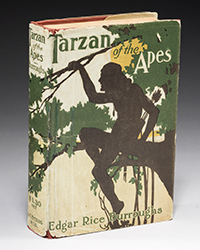
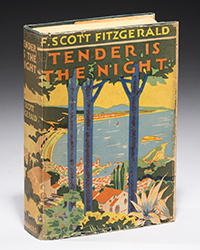
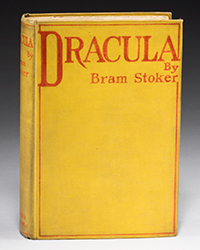
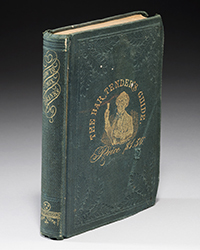




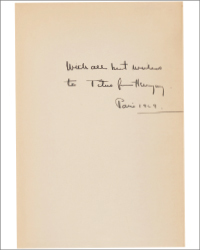

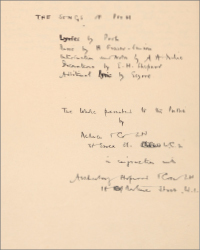

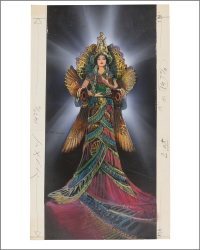

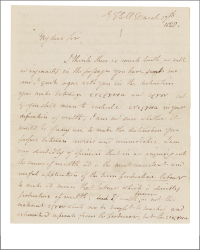
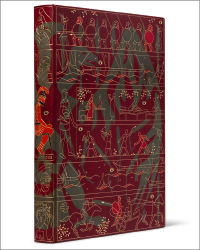
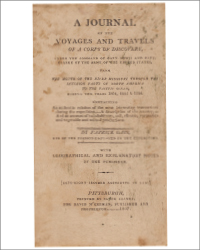


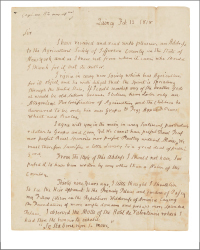

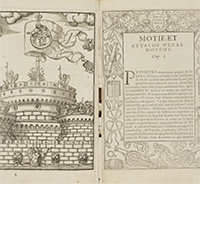
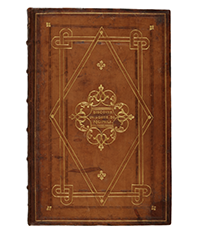
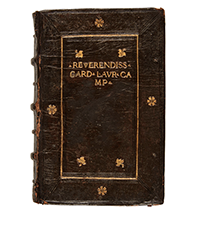
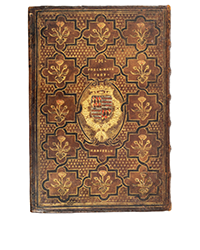


![<b>Sotheby’s, Dec. 16:</b> [Austen, Jane]. A handsome first edition of <i>Sense and Sensibility,</i> the author's first novel. $60,000 to $80,000. <b>Sotheby’s, Dec. 16:</b> [Austen, Jane]. A handsome first edition of <i>Sense and Sensibility,</i> the author's first novel. $60,000 to $80,000.](https://ae-files.s3.amazonaws.com/AdvertisementPhotos/9a74d9ff-42dd-46a1-8bb2-b636c4cec796.png)
